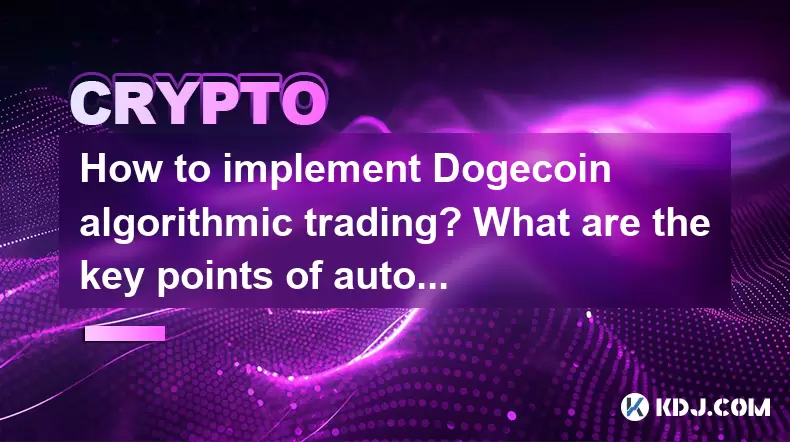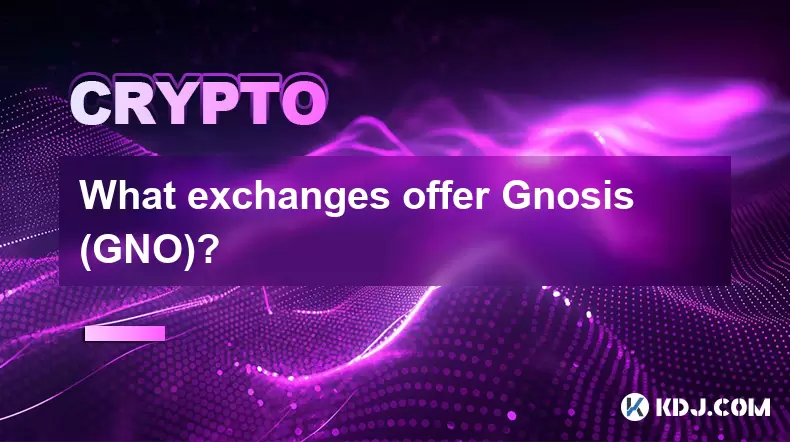-
 Bitcoin
Bitcoin $118600
-2.59% -
 Ethereum
Ethereum $4282
-0.42% -
 XRP
XRP $3.129
-4.21% -
 Tether USDt
Tether USDt $0.0000
0.01% -
 BNB
BNB $805.4
-1.80% -
 Solana
Solana $174.3
-5.77% -
 USDC
USDC $0.9998
-0.01% -
 Dogecoin
Dogecoin $0.2230
-6.33% -
 TRON
TRON $0.3466
1.70% -
 Cardano
Cardano $0.7745
-5.73% -
 Chainlink
Chainlink $21.37
-3.53% -
 Hyperliquid
Hyperliquid $42.93
-7.25% -
 Stellar
Stellar $0.4324
-4.94% -
 Sui
Sui $3.660
-7.17% -
 Bitcoin Cash
Bitcoin Cash $591.6
2.72% -
 Hedera
Hedera $0.2467
-7.04% -
 Ethena USDe
Ethena USDe $1.001
0.00% -
 Avalanche
Avalanche $22.92
-6.14% -
 Litecoin
Litecoin $118.8
-3.79% -
 Toncoin
Toncoin $3.378
-0.46% -
 UNUS SED LEO
UNUS SED LEO $9.011
-1.15% -
 Shiba Inu
Shiba Inu $0.00001294
-5.81% -
 Uniswap
Uniswap $11.24
0.53% -
 Polkadot
Polkadot $3.870
-6.16% -
 Cronos
Cronos $0.1662
-1.68% -
 Dai
Dai $1.000
0.02% -
 Ethena
Ethena $0.7915
-5.62% -
 Bitget Token
Bitget Token $4.414
-1.65% -
 Monero
Monero $259.3
-3.85% -
 Pepe
Pepe $0.00001120
-8.29%
How to implement Bitcoincoin algorithmic trading? What are the key points of automatic execution strategy?
Dogecoin algorithmic trading involves setting up a trading environment, developing a strategy, and implementing automatic execution to capitalize on market opportunities efficiently.
May 20, 2025 at 11:56 am

Introduction to Dogecoin Algorithmic Trading
Dogecoin, originally created as a meme cryptocurrency, has gained significant traction in the crypto market. Algorithmic trading, also known as algo-trading, involves using computer programs to execute trades based on predefined criteria. Implementing Dogecoin algorithmic trading can help traders capitalize on market opportunities more efficiently. This article will guide you through the process of setting up a Dogecoin algorithmic trading system and discuss the key points of automatic execution strategy.
Setting Up the Trading Environment
To begin with Dogecoin algorithmic trading, you need to set up a suitable trading environment. Here are the steps to follow:
Choose a Trading Platform: Select a platform that supports algorithmic trading and offers Dogecoin trading pairs. Popular choices include Binance, Kraken, and Coinbase Pro. Ensure the platform has an API that allows for automated trading.
API Integration: Obtain the API keys from your chosen trading platform. These keys will allow your trading software to interact with the platform. Ensure you keep these keys secure to prevent unauthorized access.
Select a Programming Language: Choose a programming language that you are comfortable with and that is well-suited for algorithmic trading. Python is widely used due to its simplicity and the availability of libraries like ccxt and pandas.
Install Necessary Libraries: Depending on your chosen language, install libraries that will help you interact with the trading platform and analyze data. For Python, you might use ccxt for exchange interactions and pandas for data manipulation.
Developing the Trading Algorithm
Once the trading environment is set up, the next step is to develop the trading algorithm. Here's how you can proceed:
Define Your Strategy: Decide on the trading strategy you want to implement. This could be a simple moving average crossover, a more complex momentum-based strategy, or even a machine learning model. For Dogecoin, you might focus on strategies that leverage its high volatility.
Code the Strategy: Write the code that implements your strategy. For a moving average crossover strategy, you would calculate moving averages of different lengths and generate buy/sell signals when they cross.
Backtest the Strategy: Use historical Dogecoin price data to test your algorithm. This step is crucial to ensure your strategy performs well and to identify any potential issues. Libraries like Backtrader or Zipline can help with backtesting in Python.
Optimize the Strategy: Based on the backtesting results, refine your strategy to improve performance. This might involve adjusting parameters or incorporating additional indicators.
Implementing Automatic Execution
Automatic execution is a critical component of algorithmic trading. Here are the key points to consider when setting up automatic execution for Dogecoin trading:
Real-Time Data Feed: Ensure your algorithm has access to real-time price data for Dogecoin. This can be achieved through the trading platform's API or third-party data providers.
Order Management: Implement logic to manage orders efficiently. This includes placing market or limit orders, canceling orders, and handling partial fills. Ensure your algorithm can adapt to changing market conditions.
Risk Management: Incorporate risk management rules into your algorithm. This might include setting stop-loss orders, position sizing based on account balance, and limiting the number of open positions.
Error Handling: Develop robust error handling mechanisms to deal with potential issues such as API downtime, connectivity problems, or unexpected market events. Your algorithm should be able to pause and resume trading safely.
Monitoring and Maintenance
After setting up your Dogecoin algorithmic trading system, ongoing monitoring and maintenance are essential. Here's what you need to do:
Monitor Performance: Regularly review the performance of your algorithm. This includes checking profitability, win/loss ratios, and other key metrics. Use dashboards or logging tools to track performance over time.
Update the Algorithm: As market conditions change, you may need to update your algorithm. This could involve tweaking parameters, incorporating new indicators, or even overhauling the strategy if it's no longer effective.
Security Measures: Ensure your trading system remains secure. This includes regularly updating software, monitoring for suspicious activity, and using two-factor authentication for your trading accounts.
Compliance and Regulations: Stay informed about any regulatory changes that might affect your trading activities. Ensure your algorithmic trading complies with all relevant laws and regulations.
Troubleshooting Common Issues
While implementing Dogecoin algorithmic trading, you might encounter several common issues. Here's how to troubleshoot them:
API Errors: If you're experiencing API errors, check your API keys and ensure they are correctly implemented. Also, verify that the API is not rate-limited and that your requests are formatted correctly.
Data Inconsistencies: If you notice discrepancies in the data your algorithm is using, validate the data source. Ensure you're using a reliable data feed and that your data processing logic is correct.
Execution Delays: If your trades are not executing as expected, check for network issues or high latency. Consider using a VPS (Virtual Private Server) closer to the exchange's servers to reduce latency.
Algorithmic Errors: If your algorithm is not performing as expected, review your code for logical errors. Also, ensure your backtesting environment accurately reflects real-world conditions.
Frequently Asked Questions
Q: Can I use the same algorithmic trading strategy for other cryptocurrencies besides Dogecoin?
A: Yes, you can adapt the same algorithmic trading strategy for other cryptocurrencies. However, you should consider the specific characteristics of each cryptocurrency, such as volatility and trading volume, and adjust your strategy accordingly. For instance, Bitcoin might require different parameters than Dogecoin due to its different market behavior.
Q: How much capital do I need to start Dogecoin algorithmic trading?
A: The amount of capital needed to start Dogecoin algorithmic trading can vary widely depending on your strategy and risk tolerance. Some traders start with as little as $100 to test their algorithms, while others might require thousands of dollars for more significant positions. It's essential to start with an amount you can afford to lose and to scale up gradually as you gain confidence in your strategy.
Q: Is it possible to run multiple Dogecoin trading algorithms simultaneously?
A: Yes, it is possible to run multiple Dogecoin trading algorithms at the same time. This can help diversify your trading strategies and potentially increase your overall profitability. However, ensure that your trading platform can handle the increased load and that your algorithms do not interfere with each other's trades.
Q: How can I protect my trading algorithms from being copied or reverse-engineered?
A: Protecting your trading algorithms from being copied or reverse-engineered involves several strategies. Use encryption for your code, limit access to your trading systems, and consider using obfuscation techniques. Additionally, regularly updating your algorithms can make it harder for others to replicate your strategies.
Disclaimer:info@kdj.com
The information provided is not trading advice. kdj.com does not assume any responsibility for any investments made based on the information provided in this article. Cryptocurrencies are highly volatile and it is highly recommended that you invest with caution after thorough research!
If you believe that the content used on this website infringes your copyright, please contact us immediately (info@kdj.com) and we will delete it promptly.
- Dogecoin, Presale, Surge: Riding the Meme Coin Wave
- 2025-08-12 11:10:12
- Dogecoin, Tron, and the ROI Reality Check: What's a Crypto Investor to Do?
- 2025-08-12 11:15:12
- Ethereum Layer-2 Scaling Competition Heats Up as ETH Breaks $4K
- 2025-08-12 10:30:12
- China Regulation, Stablecoins, and BNB Presale: Navigating the Crypto Landscape
- 2025-08-12 11:30:12
- Meme Coins, Investment, and Token Burns: What's Hot in 2025?
- 2025-08-12 10:30:12
- China's National Security Alarm Bells Ring Over Worldcoin's Iris Scans
- 2025-08-12 11:35:12
Related knowledge

How to purchase Aragon (ANT)?
Aug 09,2025 at 11:56pm
Understanding Aragon (ANT) and Its PurposeAragon (ANT) is a decentralized governance token that powers the Aragon Network, a platform built on the Eth...

Where to trade Band Protocol (BAND)?
Aug 10,2025 at 11:36pm
Understanding the Role of Private Keys in Cryptocurrency WalletsIn the world of cryptocurrency, a private key is one of the most critical components o...

What is the most secure way to buy Ocean Protocol (OCEAN)?
Aug 10,2025 at 01:01pm
Understanding Ocean Protocol (OCEAN) and Its EcosystemOcean Protocol (OCEAN) is a decentralized data exchange platform built on blockchain technology,...

Where can I buy UMA (UMA)?
Aug 07,2025 at 06:42pm
Understanding UMA and Its Role in Decentralized FinanceUMA (Universal Market Access) is an Ethereum-based decentralized finance (DeFi) protocol design...

What exchanges offer Gnosis (GNO)?
Aug 12,2025 at 12:42pm
Overview of Gnosis (GNO) and Its Role in the Crypto EcosystemGnosis (GNO) is a decentralized prediction market platform built on the Ethereum blockcha...

How to buy Storj (STORJ) tokens?
Aug 09,2025 at 07:28am
Understanding Storj (STORJ) and Its Role in Decentralized StorageStorj is a decentralized cloud storage platform that leverages blockchain technology ...

How to purchase Aragon (ANT)?
Aug 09,2025 at 11:56pm
Understanding Aragon (ANT) and Its PurposeAragon (ANT) is a decentralized governance token that powers the Aragon Network, a platform built on the Eth...

Where to trade Band Protocol (BAND)?
Aug 10,2025 at 11:36pm
Understanding the Role of Private Keys in Cryptocurrency WalletsIn the world of cryptocurrency, a private key is one of the most critical components o...

What is the most secure way to buy Ocean Protocol (OCEAN)?
Aug 10,2025 at 01:01pm
Understanding Ocean Protocol (OCEAN) and Its EcosystemOcean Protocol (OCEAN) is a decentralized data exchange platform built on blockchain technology,...

Where can I buy UMA (UMA)?
Aug 07,2025 at 06:42pm
Understanding UMA and Its Role in Decentralized FinanceUMA (Universal Market Access) is an Ethereum-based decentralized finance (DeFi) protocol design...

What exchanges offer Gnosis (GNO)?
Aug 12,2025 at 12:42pm
Overview of Gnosis (GNO) and Its Role in the Crypto EcosystemGnosis (GNO) is a decentralized prediction market platform built on the Ethereum blockcha...

How to buy Storj (STORJ) tokens?
Aug 09,2025 at 07:28am
Understanding Storj (STORJ) and Its Role in Decentralized StorageStorj is a decentralized cloud storage platform that leverages blockchain technology ...
See all articles

























































































